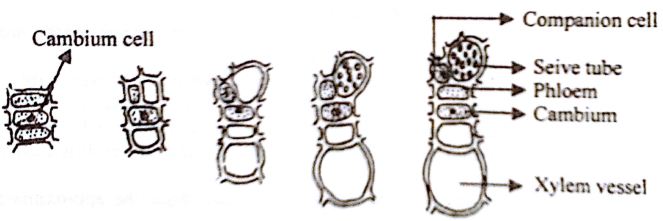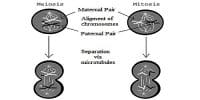Formation of secondary xylem and secondary phloem
Each cell of a cambium ring is divided to produce two cells, of which one acts as a cambium mother cell and the other as xylem mother cell (remaining inside) or a phloem mother cell (remaining outside.)
Mother cells (xylem mother cells or phloem mother cells) add more cells inwards than outwards through repeated divisions.
The cells formed on the inner side grow to their full size and become permanent to form a secondary xylem tissue and cells formed on the outer side form a secondary phloem tissue.
Secondary xylem tissue: Vessel, trachea, xylem fibre and xylem parenchyma.
Secondary phloem tissue: Seive tubes, companion cells, phloem fibre and phloem parenchyma.

Fig: Formation of secondary xylem and secondary phloem from cambium
Functions: Secondary xylem tissue conducts water and mineral salts and gives mechanical support. Secondary phloem tissue conducts food materials to growth regions of the plant.













